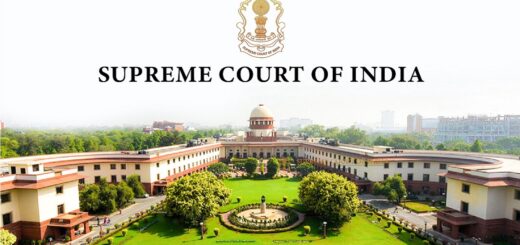SC urges a tree census and the establishment of an authority to manage the work of the tree officer in Delhi.

The Supreme Court emphasized the importance of conducting a tree census in the national capital and expressed its intention to establish an authority to oversee the work of the tree officer. Justices Abhay S Oka and Augustine George Masih stated that the strict enforcement of the Delhi Preservation of Trees Act, 1994, needs urgent attention. “In addition to the tree census, we plan to create an authority that will ensure the tree officer performs their duties correctly. There must be oversight on the permissions granted,” the bench explained. The 1994 Act outlines the preservation of trees in Delhi and details the roles of the tree authority and tree officer.
The bench was reviewing a request to prevent the Delhi government from allowing tree cutting without the court’s approval. During the session, the judges asked the lawyers for suggestions on how to form the authority. They noted that not only individual experts are needed, but also an institution should be part of this effort. “We believe that strong measures are necessary in environmental issues,” the bench remarked. The Supreme Court acknowledged that the lawyers involved in environmental preservation cases have been very cooperative and have consistently taken a responsible approach.
We appreciate your efforts. “Your lordships are working for a better future for us and our children,” said Additional Solicitor General Aishwarya Bhati. The Supreme Court emphasized the importance of strictly enforcing the 1994 Act. “To allow the lawyers to discuss this matter, we will schedule the petition for December 18,” the court stated. One lawyer mentioned past notifications from the Delhi government that exempted certain areas or tree species from the 1994 Act. “This authority needs to be limited for now. They can’t keep issuing notifications under Section 29 of the Act,” he argued.
Section 29 allows the government to grant exemptions. While one lawyer claimed there was “a lot of awareness” among the public, another pointed out that the situation on the ground was still poor, mentioning that two trees had been cut down on the Supreme Court grounds. The advocate noted that complaints made to the forest department’s tree helpline received no replies. “Make sure to record that complaint,” the bench instructed. On November 22, the Supreme Court suggested forming a committee of experts and stated that any permission to cut down trees in Delhi would require the committee’s approval. Highlighting the declining tree cover in the capital, the court noted that the expert committee would review permissions granted by the tree authority and the officers appointed under the 1994 Act.
The court referenced Section 7(b) of the 1994 Act, which states that the tree authority must conduct a census of existing trees and, when needed, collect information from landowners or occupants about the number of trees on their property. An application submitted to the Supreme Court claimed that five trees are cut down every hour in the national capital. It also requested that the Union Ministry of Environment, Forest and Climate Change be stopped from allowing forest diversions in Delhi without the Supreme Court’s approval.
During today’s hearing, the Supreme Court addressed several other applications, including one that alleged trees were being cut down for a foot-over bridge construction. An advocate mentioned that on November 22, the Supreme Court instructed the police officers from Inder Puri and Narayana Vihar to visit the site immediately to check if any tree cutting had occurred or was ongoing. Bhati informed the court that no trees had been cut there.









